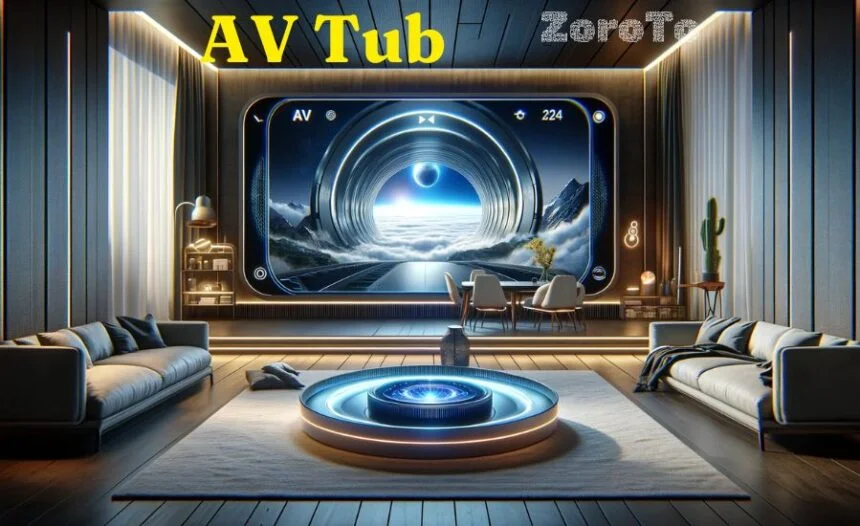In the realm of modern entertainment and communication, audio-visual (AV) technology stands as a cornerstone, seamlessly blending sound and imagery to create immersive experiences. At the heart of this technological marvel lies the humble AV tube, a fundamental component that has played a pivotal role in shaping the landscape of visual and auditory experiences. From its inception to the present day, the AV tube has undergone a remarkable evolution, driving innovation and revolutionizing various industries. In this comprehensive exploration, we delve into the multifaceted journey of Av tub, tracing their origins, pivotal milestones, and future prospects.
Origins and Early Development
The genesis of Av tub can be traced back to the late 19th century, amidst the dawn of the electric age. Early pioneers such as Thomas Edison and Nikola Tesla laid the groundwork for the development of vacuum tubes, which would later serve as the foundation for AV technology. The invention of the cathode-ray tube (CRT) in the early 20th century marked a significant breakthrough, providing the means to display visual images through the emission of electrons onto a phosphorescent screen.
The Rise of Television and Broadcast Technology
The advent of television in the mid-20th century propelled Av tub into the spotlight, ushering in a new era of mass communication and entertainment. CRTs emerged as the dominant technology for television displays, offering viewers a window to the world through the transmission of broadcast signals. The widespread adoption of television sets revolutionized home entertainment, bringing news, sports, and entertainment directly into people’s living rooms.
Advancements in Display Technology
Throughout the latter half of the 20th century, rapid advancements in display technology fueled the evolution of Av tub. The development of color television introduced new challenges and opportunities, leading to innovations such as shadow mask CRTs and Trinitron tubes. These technologies improved color reproduction and image quality, enhancing the viewing experience for audiences worldwide.
The Emergence of Flat Panel Displays
In the late 20th century, the emergence of flat panel display technologies posed a formidable challenge to traditional CRTs. Liquid crystal displays (LCDs) and plasma displays offered sleeker form factors and reduced power consumption, making them increasingly popular choices for televisions and computer monitors. Despite initial skepticism, flat panel displays quickly gained traction, paving the way for the eventual decline of CRT technology.
The Digital Revolution
The turn of the millennium witnessed a paradigm shift in AV technology with the widespread adoption of digital formats. Liquid crystal display televisions (LCD TVs) and organic light-emitting diode (OLED) displays emerged as frontrunners in the digital revolution, offering superior image quality and versatility. The transition from analog to digital broadcasting further accelerated this transformation, enabling high-definition (HD) and ultra-high-definition (UHD) content delivery.
Integration with Consumer Electronics
In parallel with technological advancements, Av tub found their way into a myriad of consumer electronics devices. From smartphones and tablets to gaming consoles and virtual reality headsets, displays have become ubiquitous in modern life. The miniaturization of display technology has enabled portable devices with stunning visual capabilities, empowering users to experience immersive entertainment on the go.
The Future of Av tub: Innovations and Beyond
Looking ahead, the future of Av tub holds promise for continued innovation and evolution. Emerging technologies such as quantum dot displays and microLEDs are poised to redefine the boundaries of visual fidelity and energy efficiency. Furthermore, advancements in augmented reality (AR) and virtual reality (VR) are unlocking new avenues for immersive storytelling and interactive experiences. As we stand on the cusp of a new era in AV technology, the journey of the humble AV tube continues to inspire awe and drive progress in the realm of audio-visual innovation.
Conclusion
In conclusion, the evolution of Av tub stands as a testament to human ingenuity and creativity, shaping the way we perceive and interact with the world around us. From their humble beginnings as vacuum tubes to their current incarnation in state-of-the-art displays, Av tub have transformed the landscape of entertainment, communication, and consumer electronics. As we reflect on the journey thus far, it becomes evident that the story of Av tub is far from over. With each technological leap forward, we inch closer to realizing the full potential of audio-visual immersion, unlocking new realms of possibility and wonder.
